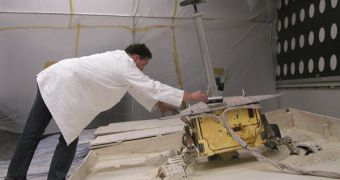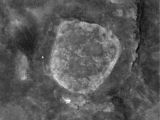As the months go by, it becomes painfully obvious to all those involved with getting Spirit out of its predicament that it isn't going to be an easy task. Though they knew from day one that it was going to be very difficult to remove the rover from the loose patch of Martian soil called Troy, engineers at NASA's jet Propulsion Laboratory (JPL), in Pasadena, California, are now beginning to reach the limits of their testing abilities. Therefore, they have now created a computer model, in which they feed all data collected from the two test rovers that simulate Spirit's conditions in Troy.
The detailed computer model of the rover's mobility is meant to augment the test drives themselves. The researchers constantly add data collected from the sandbox robots, in an attempt to increase the simulation's accuracy. The main target of these efforts is to pinpoint the limits of Spirit's mobility on the Red Planet. “The computer modeling will allow us to connect the results from tests performed in Earth gravity with what to expect from the rover in Mars gravity,” JPL expert John Callas, who is the MER project manager, explains.
“An additional round of testing was added to the September schedule to gain more detailed assessment of how to move Spirit while avoiding putting the rover's center of gravity directly over a rock that is touching or nearly touching the rover's underbelly. Other added tests are using a lighter-weight test rover than the one used for most of the testing this summer,” a press release on JPL's website informs.
“A complete 'dress rehearsal' test of the extrication strategy judged to hold the best chance of success is planned in the test setup at JPL before the team commands Spirit to begin driving. That test and subsequent review of its results are expected to take several weeks. Moves by Spirit will not begin before October, according to current plans,” it adds.
“We are proceeding very cautiously and exploring all reasonable options. There is a very real possibility that Spirit may not be able to get out, and we want to give Spirit the very best chance,” Callas says. Power supplies for now are good, although not at the high levels recorded earlier this year. Spirit has been roving the surface of Mars for the last five years, though its original mission was slated to end in three months.

 14 DAY TRIAL //
14 DAY TRIAL // 
